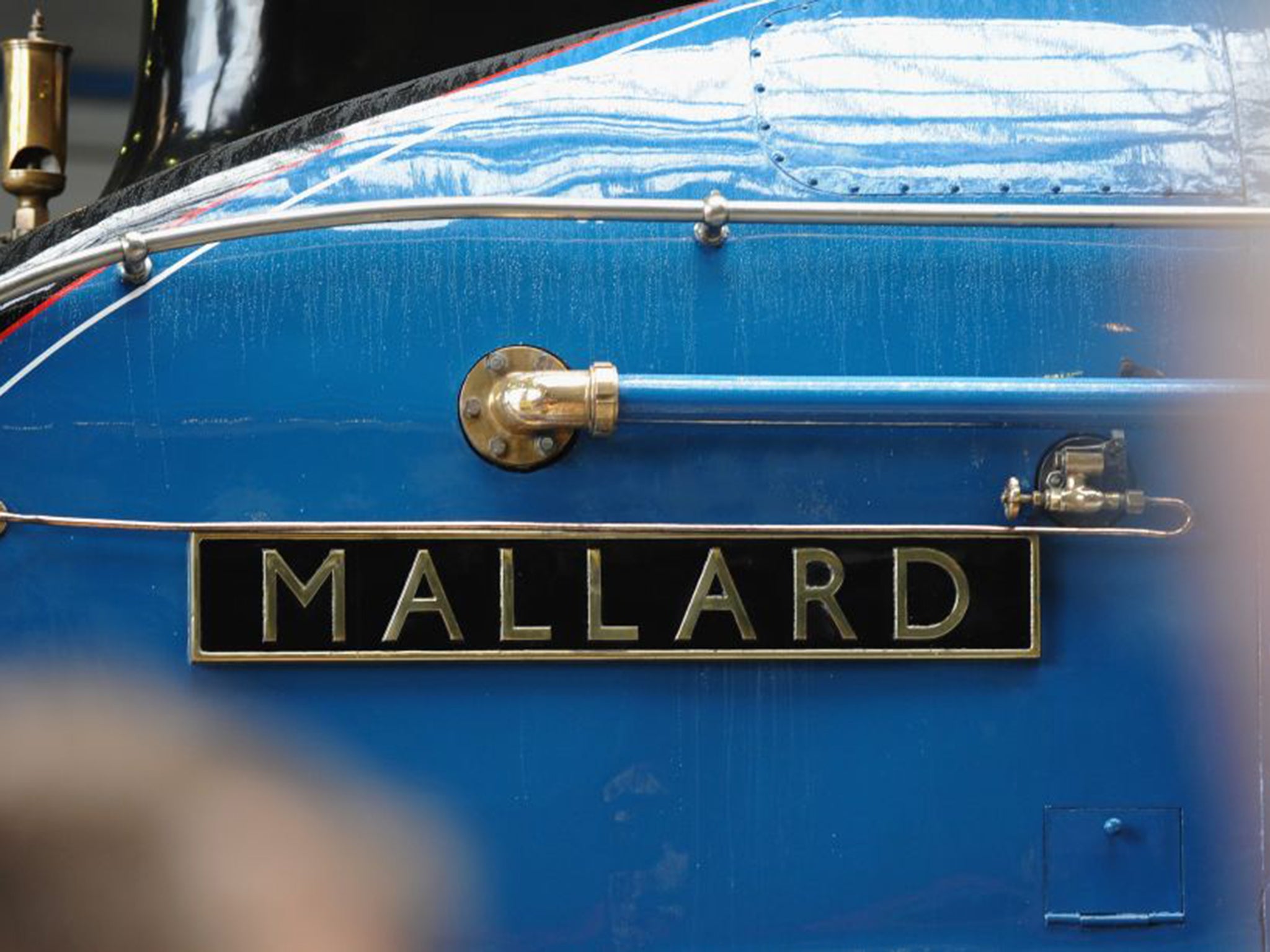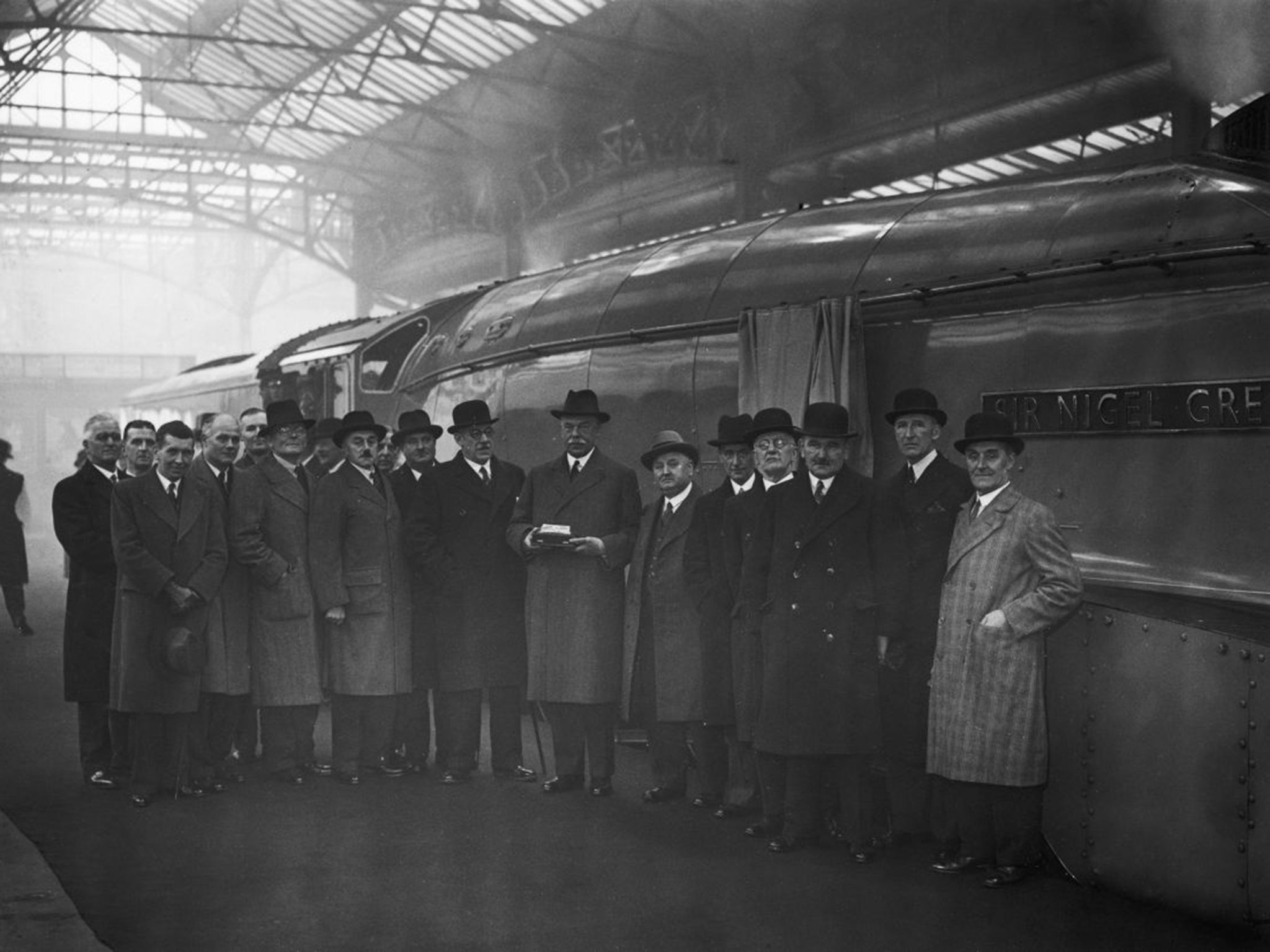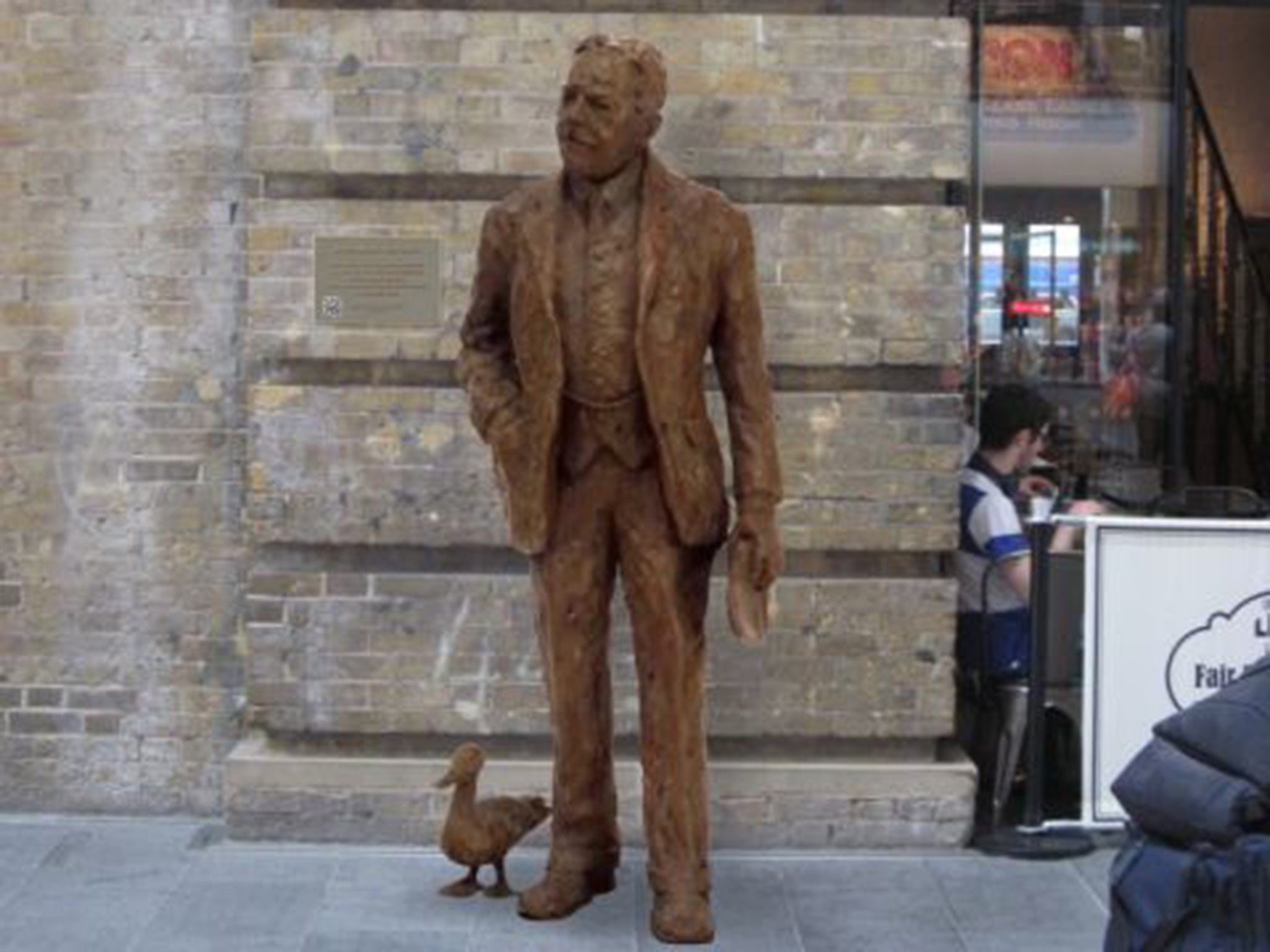Duck fanciers fight for the legacy of Sir Nigel Gresley, the man behind the Mallard
An argument over whether to include a mallard in a sculpture has now erupted into a vicious row

The statue of Sir Nigel Gresley at King’s Cross station was supposed to be a joyous commemoration of one of Britain’s great railway pioneers.
But a bizarre disagreement over whether to include a mallard in the sculpture has now erupted into a vicious row within the society that bears his name - after the chairman accused “unbalanced duck fanatics” of going against the wishes of the acclaimed engineer’s surviving relatives.

The Gresley Society, which has about 500 members, commissioned sculptor Hazel Reeves to design a sculpture of Sir Nigel to be unveiled in King’s Cross next April, to mark the 75th anniversary of his death.
Ms Reeves included a duck at the engineer’s feet to represent his greatest engineering achievement: the Mallard locomotive which hit speeds of 126mph in 1938, still a record for a steam engine. Sir Nigel was also known to enjoy feeding the ducks at his home in Salisbury Hall, near St Albans in Hertfordshire.
Last November, the design was unveiled to wide acclaim. But subsequent complaints from the engineer’s grandsons that the duck “demeaned” the engineer prompted a U-turn from the society’s council, who conceded that they should have consulted the family before publishing the design. The duck was removed from the plans and three council members who had been working on the project resigned.
But now the pro-duck campaign has received a shot in the arm – after the patron of the Gresley Society, construction millionaire Sir William McAlpine said he believed the duck should be re-instated. Describing those opposed to the duck, including the society’s own chairman, of missing the point, he said: “I was attracted by the statue with the duck when it was first shown in the press. “It would attract attention to the statue, which presumably was what it was intended to do. I still think that.”
Sir William, former director of construction company Sir Robert McAlpine, has added his name to the petition calling for the reinstatement of the mallard, which has more than 2,300 signatures.
He appears to be among those enraged by recent comments from the Gresley Society chairman David McIntosh, who described those who had signed the petition as “unbalanced” and “mostly duck fanatics who are egged on and led only by themselves”.
Sir William believes members of the public who had donated to the £95,000 project should have the right to decide on the duck, rather than the society’s council. “It is something I feel strongly about,” he told Steam Railway magazine. “I don’t think that makes me ‘unbalanced’.”
The businessman also revealed that Mc McIntosh wrote to him last month to ask him to reconsider his pro-duck position, but he refused.
Sir William is feted by locomotive enthusiasts as he rescued the Flying Scotsman, another of Sir Nigel’s steam engines, from a financially disastrous tour of the US four decades ago.
The duck’s inclusion has been backed by English Heritage, Camden Council and Network Rail. But it is opposed by Sir Nigel’s relatives. One of his grandsons, Tim Godfrey, complained earlier this year: “It’s a statue for a man, not a stupid duck”

The relatives “no doubt wish to show respect for the great man, but I think they have missed the point,” Sir William told the magazine. “The duck shows him as human, and with interests other than railways.”
Libby Ranzetta, who started the petition, said: “Sir William and all our supporters believe that the mallard, rather than detracting from the statue’s dignity, is key to attracting attention and piquing interest in the Gresley story for years to come.”
Unbeatable: The speed record set in 1938 that still stands today
Sir Nigel Gresley was the chief mechanical engineer of the London and North Eastern Railway (LNER). His A4 class of locomotive cut the journey between King’s Cross and Newcastle to just four hours.
Number 4468 Mallard, the 28th of 35 A4 class express locomotives, was built at LNER’s Doncaster Works in south Yorkshire in March 1938. Five months later, the 70-foot long locomotive was chosen to make an attempt on the speed record as it was the first of its class to be fitted with a double chimney.
On 3 July 1938, it sped down Stoke Bank in Lincolnshire on the East Coast Main Line at 126mph. It set a record for a steam locomotive – breaking that held by the German DRG Class 5 002 set two years earlier – and it still stands today.
Mallard was retired in 1963 but restored in the 1980s and is now part of the National Railway Museum’s collection.
Join our commenting forum
Join thought-provoking conversations, follow other Independent readers and see their replies
Comments